This wonderful Cornish workshop and museum is dedicated to the legacy of studio pottery trailblazer Bernard Leach
5 egg-cellent artworks for April
5 egg-cellent artworks for April
6 Apr 2023
The supermarket aisles are bursting at the seams with chocolate goodies – as they have been since Boxing Day – and children are waiting with dwindling patience for a globetrotting rabbit. It’s Easter, and though the day has largely departed from its Christian origins, many of its traditions remain infused with biblical thinking.
Those chocolate eggs are believed to have a direct line to the story of Jesus’s resurrection; their rollable shape a representation of the stone that guarded his tomb. Other suggestions find connections to pagan celebrations of spring as a time of rebirth – after all, are eggs not the most prominent icon of new life?
Whatever the real story, eggs are inextricably linked to the months of March and April, and with a salute to that, we invite you to discover the tales of the following five eggy artworks.
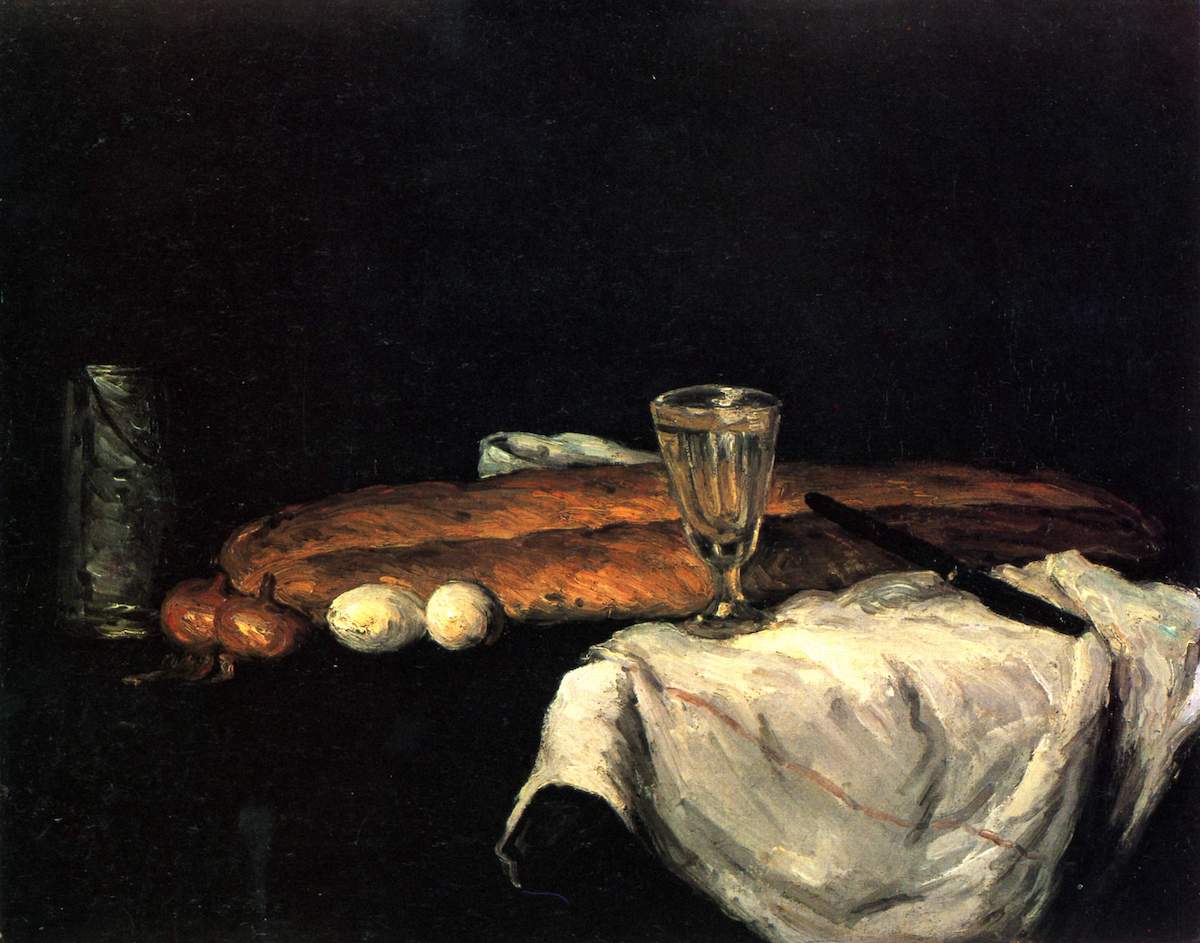 Still Life with Bread and Eggs by Paul Cezanne, 1865. Image: Cincinnati Art Museum, gift of Mary E Johnston
Still Life with Bread and Eggs by Paul Cezanne, 1865. Image: Cincinnati Art Museum, gift of Mary E Johnston
Look at those luminous two eggs to the fore of this fine still life by Cezanne, lighting up what, on the face of it, is an un-showy instalment in his so-called ‘dark period’.
Coming in the 1860s, this was a time when by theme and palette the artist stuck largely to the bleak, the grimy and the dimly lit.
However, new life was breathed into the painting in December when its hidden secret was revealed: there was, in fact, a portrait lurking beneath.
Serena Urry, chief conservator at Cincinnati Art Museum, where it is housed, noticed a layer of white paint beneath some cracks in the surface layer. A subsequent X-ray showed a covered-up portrait of Cezanne – very likely a self-portrait, and if so, one of the earliest he made. You can see the concealed image here.
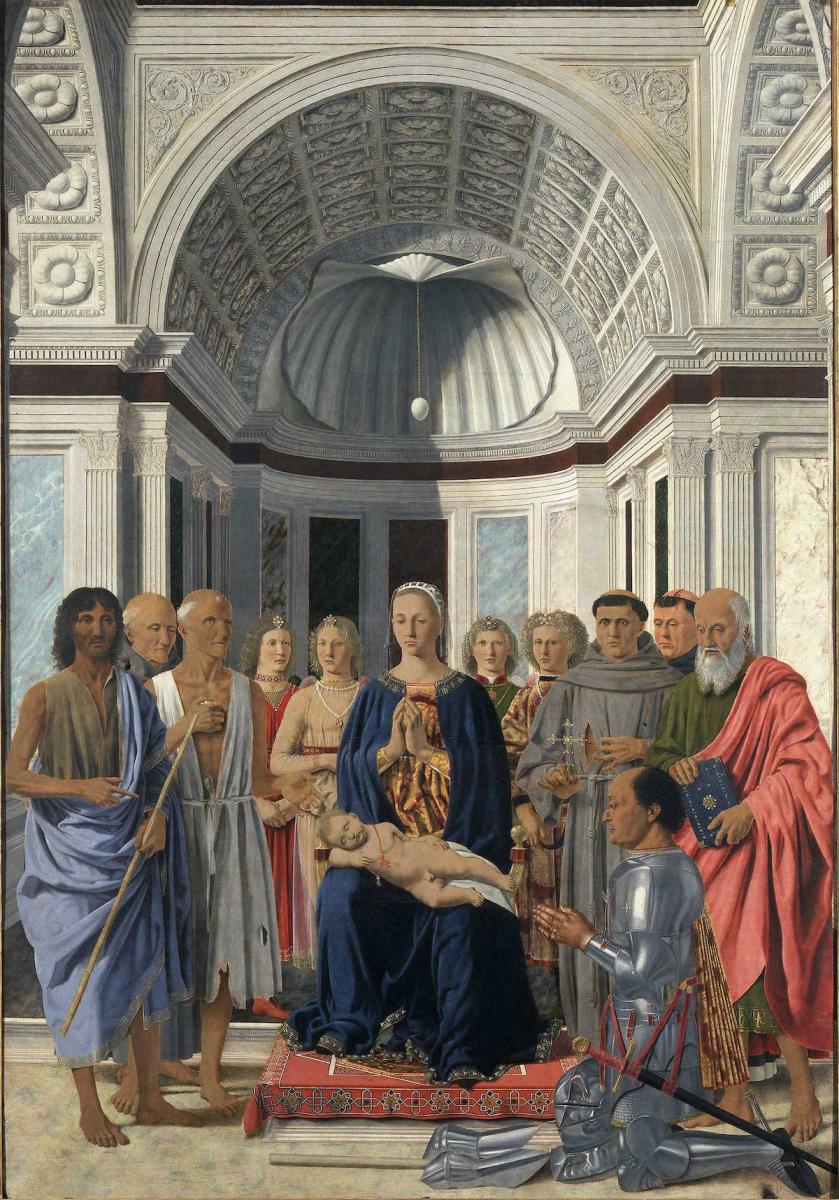 Madonna and Child with Saints, Angels and Federico da Montefeltro by Piero della Francesca, c.1472. Image on display at the Pinacoteca di Brera of Milan
Madonna and Child with Saints, Angels and Federico da Montefeltro by Piero della Francesca, c.1472. Image on display at the Pinacoteca di Brera of Milan
This altarpiece from Urbino in Italy certainly meets the standard of egg prominence, with its ostrich egg dangling by a chain from within a giant shell.
It is the work of artist Piero della Francesca (c.1415–92) who, most remembered for his artworks – and, more specifically, religious frescoes – was actually primarily considered a mathematician.
The painting is now housed at the Pinacoteca di Brera of Milan, having first been taken there by Napoleon.
While the egg may draw the eye, it is the characters below who take up most of the frame. Here sits the Virgin Mary and her child, and then, variously, John the Baptist, Peter the Martyr, John the Evangelist and other saints.
Returning to the egg, its symbolism has been interpreted several ways. It could be a reminder of the miracle of Jesus’s birth, or it could be here in its role as an emblem of the Montefeltro family, for whom it was first made.
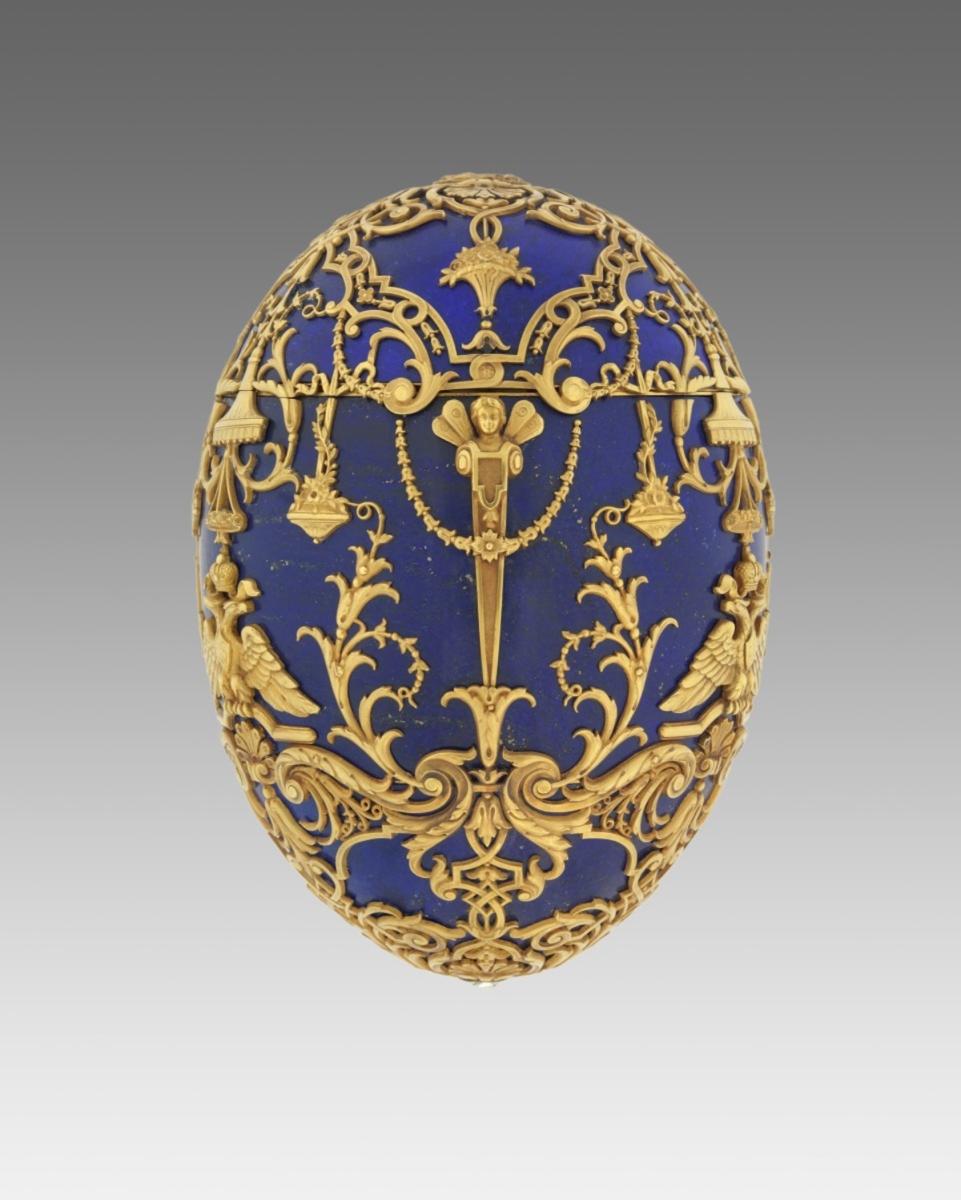 Imperial Tsarevich Easter Egg, Vasilii Zuiev, Henrik Wigström, Fabergé 1912.
Imperial Tsarevich Easter Egg, Vasilii Zuiev, Henrik Wigström, Fabergé 1912.
No overview of egg masterpieces would be complete without at least one of the surviving Fabergé creations.
This, the Tsarevich egg, was created for Empress Alexandra Fyodorovna, the last Empress of Russia and, as of 2000, Saint Alexandra the Passion Bearer. It was a gift from her husband, Tsar Nicholas II, in 1912.
When seen on display at the Virginia Museum of Fine Arts, it appears to have been crafted from one solid piece of lapis lazuli, although in truth it is actually made up of six segments, with the joins hidden beneath golden cage work. Inside lies a surprise: a portrait of Alexei, Alexandra’s son, set in precious stones.
His survival of haemophilia – credited by Alexandra to the great man of mystery Rasputin – appeared miraculous, and it was in recognition of this that Fabergé created the egg.
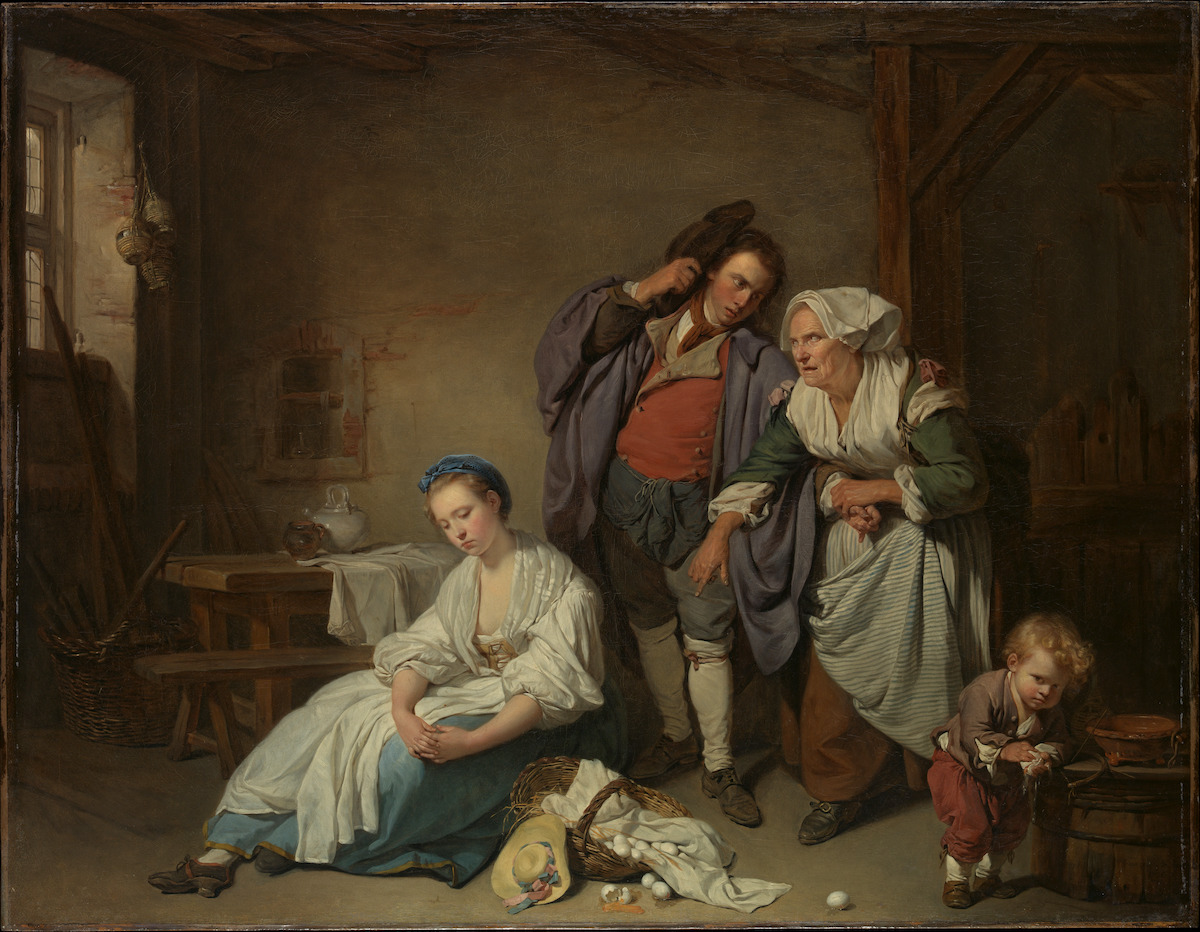 Broken Eggs by Jean-Baptiste Greuze, 1756. Image: The Met Collection, bequest of William K Vanderbilt, 1920
Broken Eggs by Jean-Baptiste Greuze, 1756. Image: The Met Collection, bequest of William K Vanderbilt, 1920
There’s a clear story being told here: a young woman sits beside a basket of broken eggs; a man is taken to task over the issue by another woman. Once again, eggs represent a form of femininity or virginity.
Greuze employed broken objects throughout his career as a symbol for the act of virginity being taken, although arguably none is so clear or striking as that of an egg.
The artist was praised for the historical treatment of this scene, and perhaps it can be seen as a stepping stone on the long and winding path he trod in an attempt to reach the position of history painter. Alas, the Royal Academy ruled that he was a genre painter and he died in great poverty, his dream unachieved.
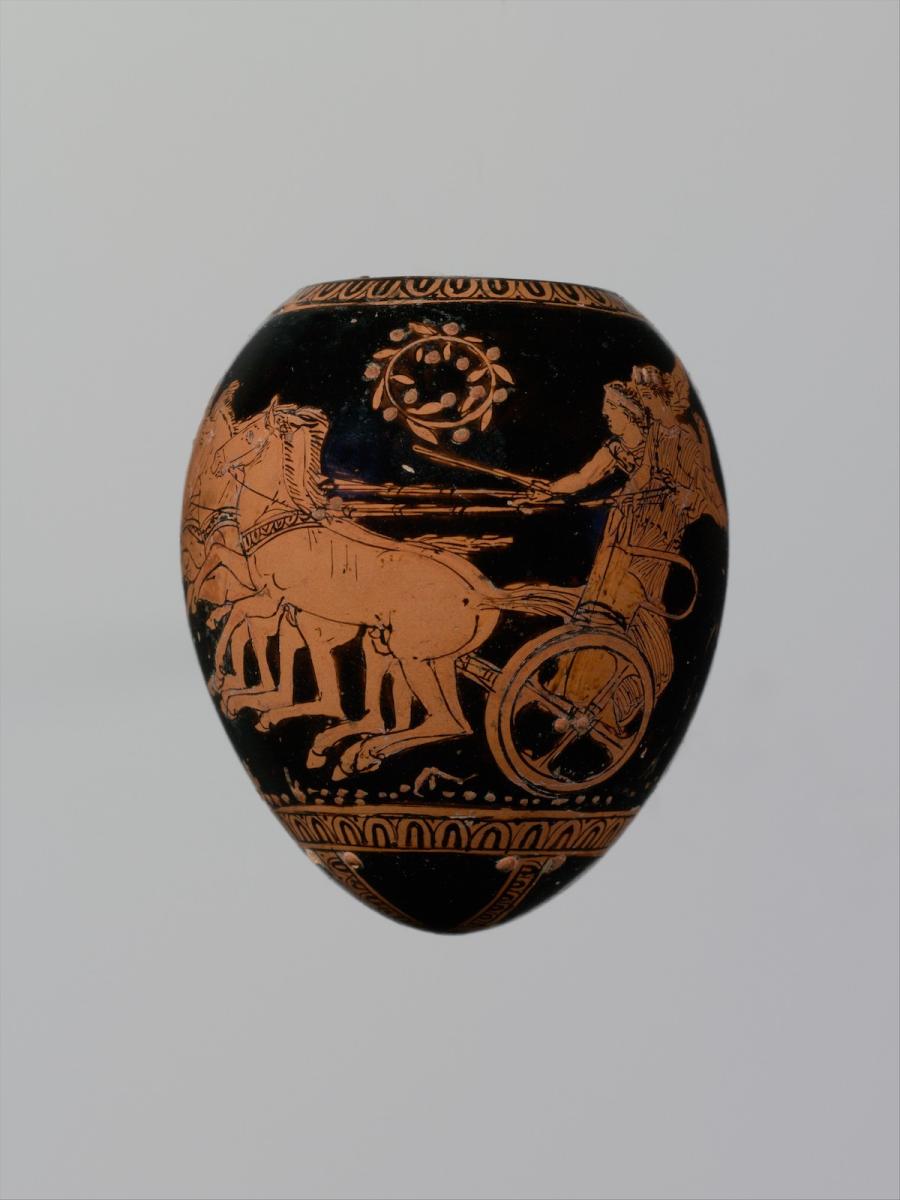 Terracotta oon, attributed to The Washing Painter c.420-410 BC. Image: The Met Collection, gift of Alastair Bradley Martin, 1971
Terracotta oon, attributed to The Washing Painter c.420-410 BC. Image: The Met Collection, gift of Alastair Bradley Martin, 1971
Choosing one egg to represent the art of antiquity is an impossible task. After all, the egg has meant so much to so many different cultures. Deities and planets have been born from eggs, as has the sun. Those of Jewish faith eat eggs after a funeral to signify loss, while Māori people would be buried with a moa egg. It is with this idea of egg mythology that attention should be turned to this terracotta oon.
The work of an unknown Greek painter and draughtsman known as The Washing Painter, it shows a young man abducting a woman. This has primarily been interpreted as a representation of Paris and Helen of Trojan War fame. Why? Well, of course, Greek mythology tells us that Helen of Troy was hatched from an egg.
That Helen was subsequently labelled the most beautiful woman in the world, and that the desire for her caused one of the most consequential conflicts in Greek mythology, only reaffirms the central role eggs have played in so many artworks, stories and creations.
About the Author
Ciaran Sneddon
Ciaran Sneddon writes for The Arts Society
JOIN OUR MAILING LIST
Become an instant expert!
Find out more about the arts by becoming a Supporter of The Arts Society.
For just £20 a year you will receive invitations to exclusive member events and courses, special offers and concessions, our regular newsletter and our beautiful arts magazine, full of news, views, events and artist profiles.
FIND YOUR NEAREST SOCIETY
MORE FEATURES
Ever wanted to write a crime novel? As Britain’s annual crime writing festival opens, we uncover some top leads
It’s just 10 days until the Summer Olympic Games open in Paris. To mark the moment, Simon Inglis reveals how art and design play a key part in this, the world’s most spectacular multi-sport competition



